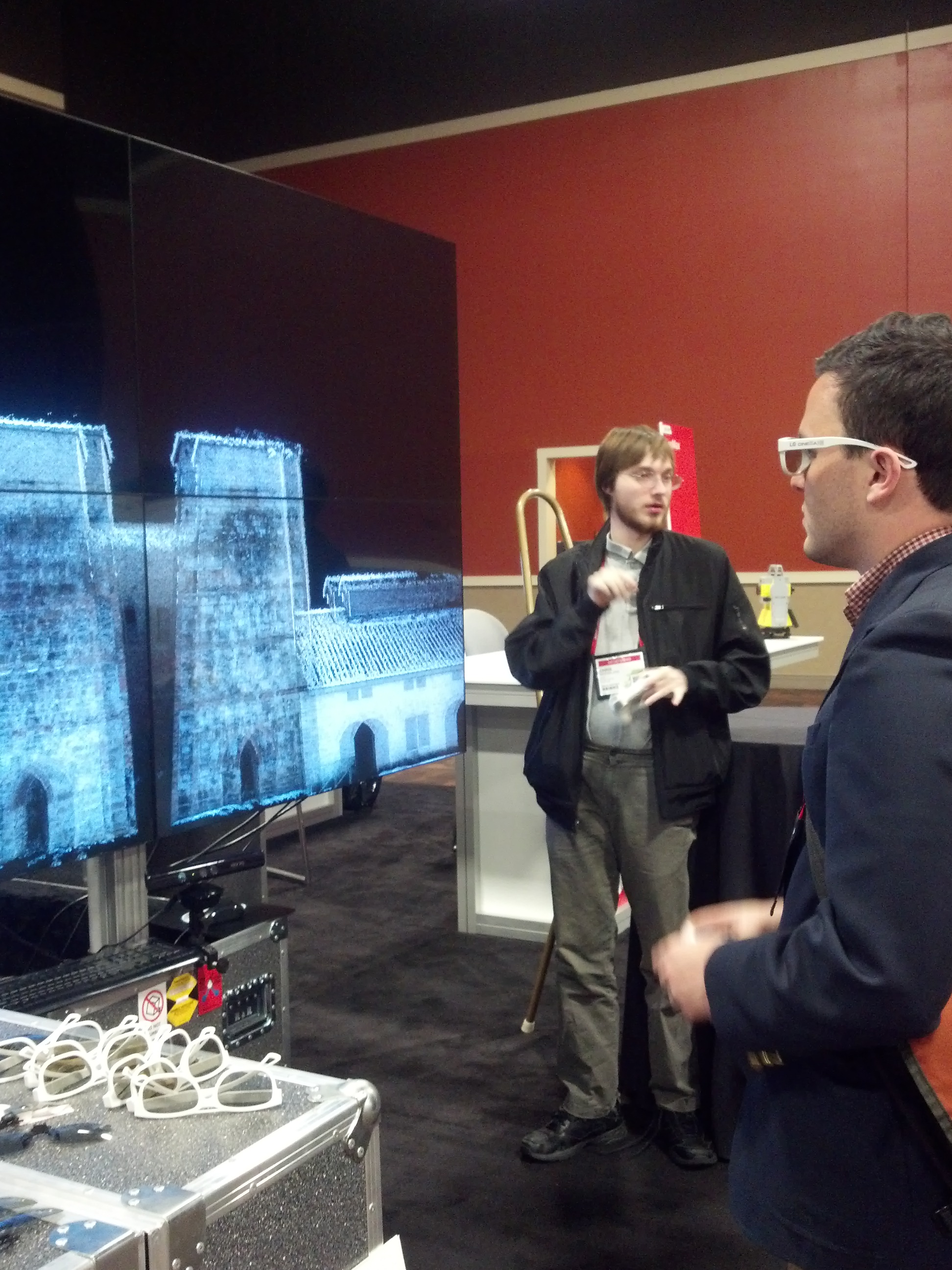1) UAVs are still capturing the market’s imagination.
UAVs are still very much on everyone’s mind, as evidenced by the popular Aibotix booth and the multiple standing-room-only UAV sessions I attended. And it seems that UAVs are inspiring a lot of creative thinking, too. Ralf Kaiser, head of the physics section of the International Atomic Energy Agency (IAEA) in Vienna, presented the outlines of a project called RAMNET, which involves a tethered ground robot with power and data cables that would act as a base station for microdrones. This kit could be used to explore large, complex areas too contaminated by radiation for humans to enter — the microdrones would fan out, gather data, and return to the base station to recharge, all without any direct human interaction or risk of radiation poisoning. Of course, most projects imagined in the US will have to remain in the imagination as long as the use of UAVs remains restricted by the FAA.
2) Technologies are fast becoming easy to use, more affordable.
As I mentioned last week, Pegasus:Two is meant to be easy enough to use even someone like me could gather and process data effectively. The technologies are also becoming less expensive and so it is more likely that a smaller company could afford and operate rigs of their own. This trend opens the door for wider adoption, which brings along all sorts of changes for the technologies and the market.
3) The visualization of data in 3D has not yet reached its full potential.
F3 and Associates were on hand at HxGN with their new Augmented Industrial workflow for Google Glass. As their website explains, “our workflow consists of 3D laser scanning an as-built environment, 3D modeling the building features from the point cloud, and then implementing it in the augmented reality application. We achieve high accuracy from surveying in the 3D model in the environment.” iPads are nice, but the possibility of seeing survey-grade data directly in your line of sight without any extra effort is very exciting. For now, it seems they have it rigged to show only pipes, but the future possibilities are endless. If only Google Glass didn’t look so kludgy.
See also: UCSD professor Falko Kuester’s presentation of a very impressive 3D visualization solution. This was also a crowd favorite. The picture above features me (with cool-looking glasses) enjoying the display.






